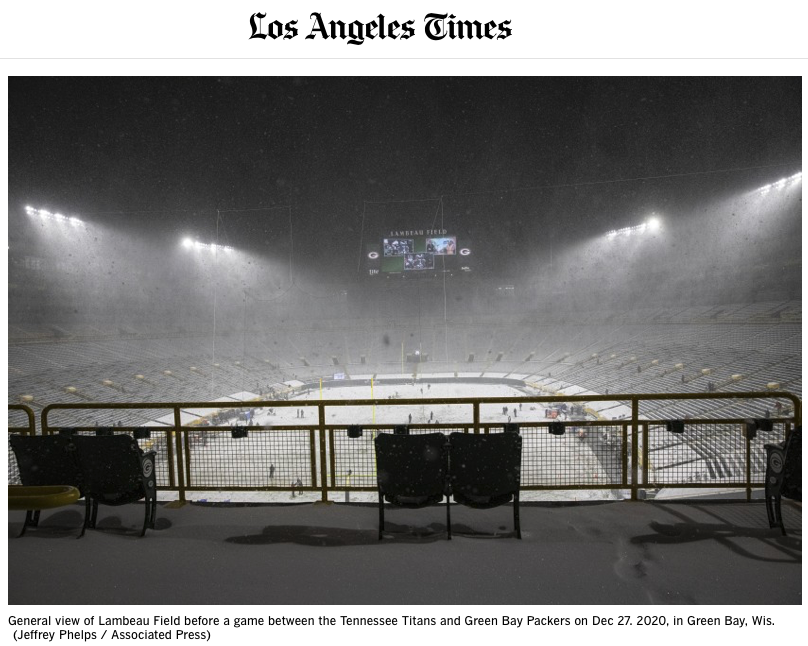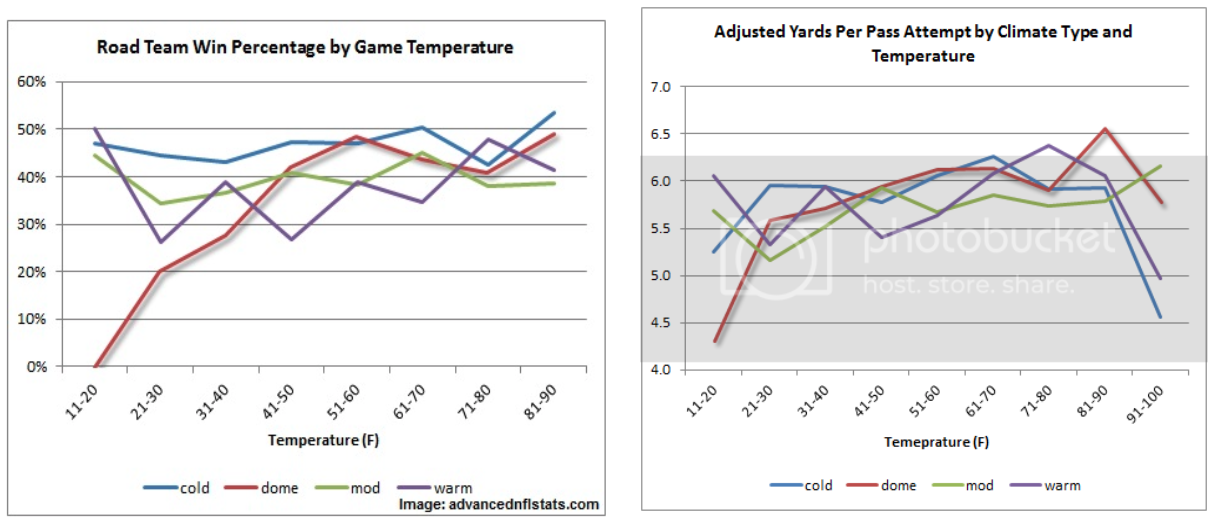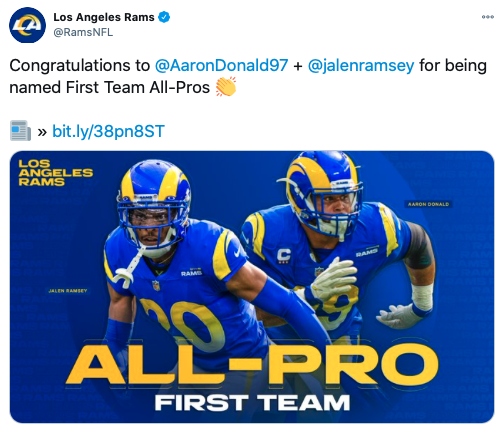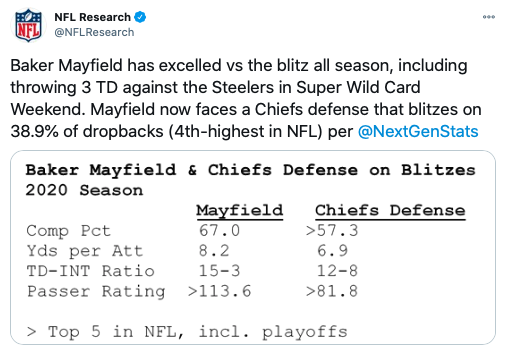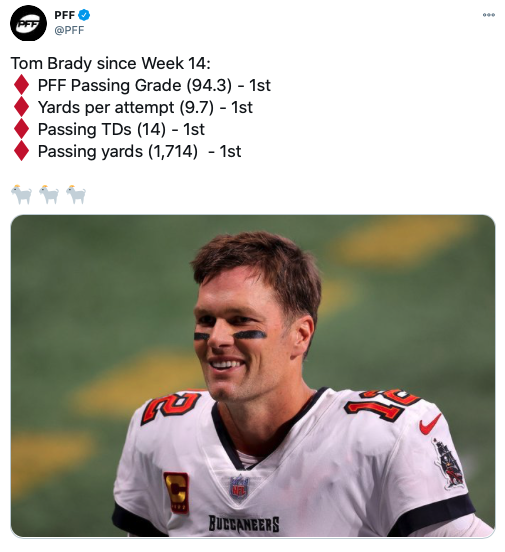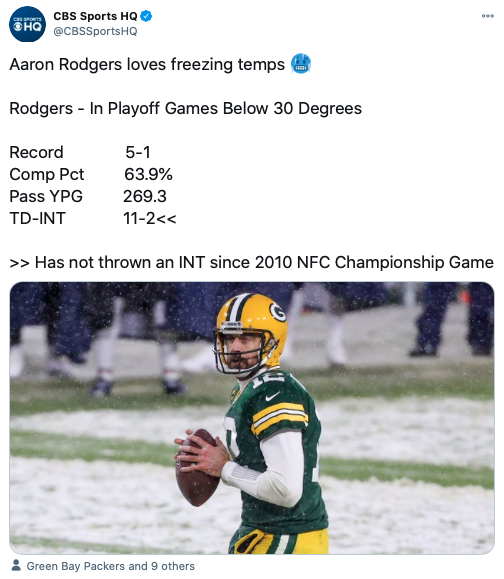Hey there. If you weren’t already aware, you’re reading Part-1 of a 4-Part breakdown on this week’s Divisional Round DFS slate. In this article, we’ll be breaking down all relevant QBs. Get the breakdowns for RBs, WRs, and TEs.
We have an exciting collection of teams featuring the best-of-the-best facing off in the Divisional Round of the playoffs. Follow along as we examine each positional grouping for each team to identify the DFS value/upside on both DraftKings and FanDuel. Below is a breakdown of the QB position.
Before we dig too deep into the specifics, it’s important that we factor in the following:
On a typical full-game slate, you would normally want to feel comfortable with most rostered players. That would even extend to punt-plays who we would normally expect to offer tremendous upside. On this shorter slate – four games, eight teams, it’s sometimes necessary to roster individuals we would normally avoid in order to pay up for studs elsewhere. If we decide on the Saturday- or Sunday-only slates, those options are cut in half.
It’s also very important to consider late-swap strategies on these smaller slates. If you have any tournament lineups that, after a bad game or two, seem unlikely to cash, you have nothing to lose, and everything to gain by adding exposure to some riskier, lower-owned players.
TL:DR: Beware of the Rams’ passing offense! My platform premium combined-slate options are Josh Allen as having the most significant upside on DK and Patrick Mahomes on FD. Baker Mayfield offers us intriguing low-salary, large field GPP value on DK.
Expose (Combined slate): Patrick Mahomes, Josh Allen, Baker Mayfield (GPPs)
Expose (Saturday-only): Allen, Lamar Jackson
Expose (Sunday-only): Mahomes, Tom Brady (GPPs), Mayfield (DK GPPs)
On the Fence (Combined): Drew Brees, Brady
On the Fence (Saturday): None
On the Fence (Sunday): None
Fade (Combined): Aaron Rodgers, Lamar Jackson (DK), Jared Goff
Fade (Saturday): Rodgers, Goff
Fade (Sunday): None
Matchups (Vegas): The games offering the highest stacking upside are Baltimore at Buffalo on the Saturday slate and Cleveland at Kansas City on Sunday. The Tampa Bay at New Orleans matchup on Sunday is also ripe for the stacking. The Ravens will travel to Orchard Park as 2.5-point dogs to face a Bills squad currently riding a seven-game winning streak. Vegas is currently passing along an implicated total of 50 points, 26.25 to Buffalo. Each of the four home teams are implied to score at least 26 points.
I am fully anticipating that we’ll see Baltimore-Buffalo score in excess of 50 points. Josh Allen and Lamar Jackson are the most obvious mobile QBs left in the playoffs. But one Kansas City QB guy is fully capable of utilizing his legs but, even facing the porous Cleveland Cover 3 and 4 zones, his pass protection hasn’t responded well to the mid-November losses of Mitchell Schwartz (back) and Kelechi Osemele (knees). We may see a continuation of the rushing prowess from last season’s playoffs.
Both of the QBs from the Chiefs and Browns offer varying levels of upside within a game implied for 57.0 points, highest of the Divisional Round, and KC implied for a weekend-high of 33.5 points. But we certainly shouldn’t forget about the Buccaneers-Saints implied for 52.0 points.
Wildcard Eulogy: Before we move forward, I’d like to detail what went wrong in Nashville this past Sunday. The Titans simply rode Derrick Henry to their grave in spite of the Ravens obviously stacking the box to shut him down. It was very difficult to watch from an unbiased perspective. Despite seeing at least eight in the box on 89 percent of carries and nine on 22 percent, King Henry responded with 61 percent of carries going for two yards-or-less, and only three of five-or-more (5, 6, and 8 yards).
After Ryan Tannehill took the NFL by storm – for a second straight season – in posting video game passing efficiency, OC Arthur Smith only entrusted Tannehill with passing attempts on 21 percent of first downs. The Ravens responded by filling the box with eight-or-nine defenders on two-thirds of first downs. Henry would produce 26 rushing yards on his 12 first down attempts. Tennessee took a 10-0 lead over Baltimore in the opening quarter thanks to Tannehill tossing for 66 percent of his total yardage on 38 percent of total attempts. Outcoached is the word that comes to mind.
Matchups (Weather): Only two-of-eight remaining playoff teams (Rams and Saints) play in a domed or retractable roof stadium. That’s a significant, often overlooked factor for these January playoff games. Since it’s not the purpose of this edition, I’ll only state that, as the temperatures drop, ground attacks experience a significant increase in efficiency. The same cannot be said for the passing games. The following chart provides the stadium type, average January temperature at home, and forecasted weekend temperatures for each playoff team:
From my research, the external factor impacting QB production the most is wind speed of 12-15 MPH-or-more. Another overlooked factor relevant to this weekend’s outdoor games are the wind gusts within the outdated, concave stadiums. It’s impossible to spot in this photo of Lambeau Field below, but the view does provide an idea on the path of wind falling on the field in a downward motion that slants at field-level.
Whereas newly-designed stadiums utilize various construction factors to distribute the strong winds, Lambeau Field (1957), Bills Stadium (1973), and Arrowhead Stadium (1972) were each constructed at least 47 years ago without any significant renovations other than seating expansions. I am certainly not a meteorologist, but wind research is not difficult to uncover. These three stadiums were purposefully constructed to give their home teams a marked advantage. The capacity expansions that drastically increased the overall stadium height only resulted in a reduction in the reliability of on-field wind conditions. High velocity wind gusts and vortexes can drop on the field of play in an instant, particularly when forecasts call for winds of 10 MPH-or-more.
After wind, dramatic shifts in climate are not that far behind in its effect on game play. Temperature extremes at both ends of the spectrum are such a tremendous factor that even Aaron Rodgers, The King in the North, has been hit with a level of drop-off in efficiency. It just has nothing close to the effect on Rodgers as it does on visiting passing offenses establishing their homes in warm-weather states, or under domes. The following charts fromAdvancedNFLStats.com provide us with some compelling evidence:
The resulting data speaks for itself. The teams experiencing the most substantial impact from playing in cold weather are those traveling in from moderate- and warm-weather states, and from playing inside climate-controlled domes. When teams play in temperatures below 25°, the sample is so small that the data is extremely unreliable. And the results have been uniform across all of the research I’ve uncovered. As temperatures drop below 40°, QB efficiency drops at an exponential rate on passing offenses. As conditions worsen, overall passing attempts decline in combination with passing YPA, and completion percentage.
As for the Why of it all, former Dallas and Miami HC Jimmy Johnson – born in Texas, attended HS in Louisiana, and matriculated at the University of Arkansas – was quoted as saying: “I remember being on the sideline in winter in the Meadowlands and it was so cold I didn't know what down it was, much less what play to use.” If you’d prefer scientific evidence, thisstudy found that both moderate and extreme reductions in ambient temperature during winter sports settings led to decrements in memory, vigilance, reaction time, and decision making. And, very important for our purposes, a reduction in cold stress from acclimation or acclimatization should in theory limit shivering and thermal discomfort and thus potentially limit the level of distraction and thus may positively influence cognitive function.
How can we use all of this information to our advantage?
For the Rams-Packers, to say Green Bay has home field advantage simply does not represent the extent of reality. In Jared Goff’s last two games played in temperatures under 35°, he’s thrown for zero TDs compared to five INTs. Now that Sean McVay has ruled out John Wolford, the entire offense will need to shift toward a traditional approach under Goff. Temperatures on Lambeau Field will start off at 34°, but will drop by around 5° by the end of the game. The only Rams’ player that will have my Cash/SE trust will be Cam Akers.
For the Ravens-Bills, both teams have plenty of experience playing in cold weather. However, wind gusts inside Bills Stadium could reach 20 MPH on Saturday night. We also need to keep a close eye on thisstormfront shaping up to cover the East Coast this weekend. It is considered well short of severe, but any type of decrease in weather conditions impacting the northeast will impact all three outdoor games. Before this piece could even be published, wind speeds have already increased for each outdoor game.
Finally, for the Browns-Chiefs, both franchises also have an extensive history of cold weather experience. But the wind gusts could dampen our expectations for offensive fireworks if the current estimation of 14 MPH velocities increase closer to gametime. Of the three outdoor games, I originally considered this to be the one to remain the safest for exposure across all skill positions. The updated forecast has temperature falling into the 30’s and wind speeds increasing from mild to moderate. That really levels the playing field for the three outdoor games.
Matchups (Pass Rush): The Rams have been the most dangerous pass rush this season. They have registered over 21 QB pressures per game led by Aaron Donald on the interior and Leonard Floyd on the edge. The Los Angeles defense has also displayed the best tackling fundamentals, and it’s not even close. Brandon Staley has done a tremendous job as the new DC this season after coaching the Denver outside LBs in 2019.
Los Angeles, New Orleans, Buffalo, and Tampa Bay each rank within the top-10 pass rushes with Cleveland and Green Bay within the top-15. On paper, the Bills, Buccaneers, and Saints should have little issue pressuring the pocket facing the porous O-lines of the Ravens, Saints, and Bucs, respectively. The Browns’ and Bills’ O-lines should be able to provide ample protection for their QBs facing the pathetic pass rushes from the Chiefs’ and Ravens’ D-lines. The most even matchup will come from both sides of the Rams-Packers. However, the metrics on Green Bay’s O-line included David Bakhtiari at LT, and the status of Donald could muddy those numbers for the Rams.
Matchup (Home vs. Away): In year’s past, home/road splits played a significant role during the playoffs. The climate at home locales has obviously already been covered. However, the absence/limitation of fan attendance mostly eliminated that portion of the home field advantage during the regular season. Here is a breakdown of the fan attendance during Divisional Round this weekend:
After the Steelers and Titans lost the most significant (around 6,000) in-stadium attendance, I am only expecting Kansas City to receive an advantage in that regard. The Chiefs will certainly accept every bit of it after taking both of their losses at home this season. The Packers and Bills are both 7-1 when hosting their opponents, with the Chiefs and Saints coming in at 6-2. Tampa Bay and Baltimore are both 6-2 on the road, Cleveland is 5-3, and the Rams are 4-4.
Note: All numbers below players in parentheses refer to their salary rank on each site.
Patrick Mahomes, QB, Kansas City Chiefs vs. Cleveland Browns
(DK: QB1, FD: QB1)
Patrick Mahomes will face the only playoff defense that surrendered pure passing FPG to opposing QBs in the bottom-10 of teams during the regular season (16.4). The Browns also permitted Ben Roethlisberger to pass for over 500 yards in the Wildcard round. To be clear, Cleveland building a three-score lead instigated that passing volume from the Steelers, but Mahomes must still be licking his chops thinking about the possibilities. We should be, as well. It took an outlandish season from Josh Allen (27.7) to narrowly top Mahomes (27.3) in FPG production.
Mahomes has averaged 44.8 opportunities/game (fifth-most) in spite of ranking 31st among QBs with a 1.1 percent designed-run backfield share. For comparison’s sake, Allen averaged 43.9 opportunities (seventh) fueled by a 20.7 percent designed-run backfield share. Patrick ranks third in YPA (7.99), second in air yards/game (386.7), and fourth in FPs/dropback (FPDb, 0.475). He also ranks within the top-10 at the position over the last two seasons against each of the NFLs five most-common coverage shells. The Browns’ fourth-highest rates of both Cover 3 and 4 zones stand little chance of slowing Mahomes’ aerial assault.
Unfortunately, all DFS salary dollars are not created equal. Every $100 on FD is worth $117 on DK. With that in mind, we simply must allocate every salary dollar with extreme consideration when building our Cash/SE lineups under DKs $50K cap. Populating our DK lineups (combined slates) with Mahomes and one of either Travis Kelce or Tyreek Hill is reasonable. Adding all three will spread the remainder of our remaining cap far too thin. With Clyde Edwards-Helaire practicing on Wednesday, my preferred KC stack on both platforms is Mahomes-Kelce-CEH.
Josh Allen, QB, Buffalo Bills vs. Baltimore Ravens
(DK: QB3, FD: QB2)
Should the Ravens decide to employ a box-stacking strategy this week against the Bills that they utilized against the Titans, the decision will prove to be foolish. First off, Buffalo only called for designed runs on 32 percent of offensive snaps (bottom-five). Second, Zack Moss was lost for the remainder of the playoffs last week due to an ankle injury. Finally, Josh Allen has compiled a 126.2 QB rating, 11 TD passes, and zero INTs when facing an eight-or-nine man box this season.
Lamar Jackson receives all of the press surrounding his rushing success, justifiably so. However, Allen’s ground game is underappreciated due to being overshadowed by his passing success. Allen can thank the addition of Stefon Diggs for aiding his ascension to the top-tier of QBs after lacking on the results side while displaying loads of promise in previous seasons. Diggs’ ability to destroy man coverage stands out, in particular, in guiding Allen along this path. As I’ve pointed out multiple times over this season, the Ravens play a ton of Cover 0 and 1 schemes, ranking them with the third-highest rate of man coverage.
We’re brought full-circle to the exact setup presenting Ryan Tannehill and A.J. Brown with a smash spot last week. Brown was able to do enough during their first quarter outburst, but the offensive play calling doomed the production from Tannehill. Since Tennessee ran the ball at the league’s third-highest rate, the fact that Buffalo ranks 22nd speaks volumes for Allen’s upside. The only potential factor working against the Bills’ passing offense is the weather. As long as those pesky wind gusts avoid redirecting some of Allen’s throws into the hands of Baltimore defenders, Allen will have zero trouble repeating the numbers he’s generated for much of the season.
On FD, I prefer Mahomes at only $400 more (actually only $333 when compared to DK). But Allen is my QB1 on DK, comfortably priced at $600 less than Mahomes, and $200 under Jackson.
Lamar Jackson, QB, Baltimore Ravens at Buffalo Bills
(DK: QB2, FD: QB4)
You simply cannot ignore the rushing output from Lamar Jackson. He’s generated 43 percent more pure rushing FPG than Allen, but his inability to move the ball through the air does cap his upside. In the same number of games played, Jackson is 606 passing yards and 11 TDs behind his totals from last season. However, that hasn’t prevented Lamar from averaging 28.5 FPG over his last six games.
Looking at those matchups, only the Giants in Week 16 – when Jackson scored 22.3 FPs – can be reasonably compared with the Bills’ defense he’ll face this week. Buffalo has been able to hide their poor run defense, missed tackle rate behind their offensive scoring output, a nasty pass rush, and underappreciated secondary play. Even though the Bills have ranked with the fifth-lowest rate of completions of 20-or-more, that’s not Jackson’s game. Buffalo’s run defense vulnerabilities define the reasoning behind Vegas allotting the second-highest implied score to Baltimore (23.75), narrowly behind Tampa Bay (24.5), among the four playoff road teams.
No matter how I view it, Jackson priced at $200 more than Allen and only $400 less than Mahomes on DK removes him from my equation for Cash/SE on either slate. On the other hand, coming in $1,200 less than Mahomes and $800 less than Allen of FD … now we have some business to discuss. The prime matchup for Mahomes combined with Cleveland’s recent run of its own offensive production leaves Jackson out in the cold in competition to be the QB1 on FDs combined slate. On the Saturday-only slate, Jackson is my QB1 on FD stacked with as many receiving options as you can fit from both Baltimore and Buffalo.
Baker Mayfield, QB, Cleveland Browns at Kansas City Chiefs
(DK: QB7, FD: QB6)
Now that we have the big-three QBs out of the way, let’s discuss a pair of low-salary, and large field GPP options. Baker Mayfield stacked with one-or-two of his receiving options, and either Tyreek Hill, Travis Kelce, and/or CEH as a runback/s is a very enticing contrarian strategy. KC RCB Bashaud Breeland has certainly had an up-and-down season, but keep in mind that the Chiefs, as a whole, have shut down opposing WR units. Coming in as 10-point road dogs, the near guarantee of playing under a negative game script simply cannot be ignored.
Kansas City allowed the 10th-most combined FPG to entire opposing offenses over their last four games (103.0), eighth-most over their last two (109.9). That includes allowing the third-most pure passing FPG over those last four games (21.0). Their complete inability to cover opposing TEs – 14.5 FPG ranked sixth-most overall – presents Mayfield-Austin Hooper stacks with plenty of appeal. The combination of Nick Chubb dominating the backfield touches in recent weeks and Kansas City hemorrhaging FPs to RBs points to the possibility of Mayfield-Chubb-Hooper as the optimal Cleveland GPP stack on DK.
Tom Brady, QB, Tampa Bay Buccaneers at New Orleans Saints
(DK: QB5, FD: QB5)
The recent string of passing success from Tom Brady matches that of any QB over the last six weeks. During that time, The GOAT has averaged 343 passing yards, 2.5 TDs, and 27.0 FPG. With his salary hovering between $6.6-7.2K on DK and $7.9-8.4K on FD in those games, how can we possibly fade him at $6.3K/$7.7K? It just so happens that Brady’s absolute worst performance this season came in Week 9 against these New Orleans Saints (5.4 FPs). When opposing offenses have succumbed to N’Orleans’ airtight run defense, reverting that volume to the pass has led to a significant increase in the Saints playing Cover 4.
Why is that significant? Brady’s FPDb has dropped by 31 percent, accompanied by a 15.9 percent decline in QB rating when facing Cover 4 over the last two seasons. Looking back to his 381 passing yards last week against Washington, on 23 percent of snaps facing Cover 4, Brady only generated 16 percent of his yardage, zero TDs, and his QB rating dropped from 115.1 to 66.9. It would’ve been mighty interesting to see how the Buccaneers would’ve fared had they used that scheme the entire game. For those reasons, I simply cannot recommend Brady in Cash/SE.
Drew Brees, QB, New Orleans Saints vs. Tampa Bay Buccaneers
(DK: QB6, FD: QB7)
I actually think Drew Brees could end up offering more value on DK than Tom Brady this weekend. He’ll see a slew of coverage looks from Tampa Bay and face an intimidating pass rush. But Brees has not been anywhere near as coverage-sensitive as Brady. Cool Brees ranks inside the top-10 QBs when facing all six of the most common coverage schemes since 2019. His numbers are especially robust against Cover 1, 3, and 4 where he ranks within the top-three.
When the Bucs’ run defense simply shut down the Saints’ rushing attack in Week 9, Brees put together four passing TDs for 23.7 FPs. He also led his team to a 34-23 victory over Tampa Bay back in Week 1. On the combined slate, we have so many other elite options at the position that he’s off the radar in Cash/SE. On the Sunday slate, you could make a reasonable argument in support of all four starting QBs. For my investment, Mahomes is the singular Cash/SE choice. But Brees is an intelligent large field GPP dart stacked with Michael Thomas, across from one of the Buccaneers’ excellent receiving options playing under the comfy confines of the Mercedes-Benz Superdome.
Aaron Rodgers, QB, Green Bay Packers vs. Los Angeles Rams
(DK: QB4, FD: QB3)
Even after putting together a monster season, I’ll be fading Aaron Rodgers this week on both platforms, and across all game types. The most obvious reason is the Rams’ elite passing defense. Los Angeles ranks within the top-five in every single defensive metric I’ve tracked this season. As long as Aaron Donald plays a full game, you cannot find a single flaw across the entire defense. But the secondary reason I will be off Rodgers is the weather.
In the last 11 games Rodgers has started on Lambeau Field in freezing conditions, the Packers have won 10, and Rodgers has compiled a 2.1-to-0.09 TD-to-INT ratio. Green Bay has averaged 30.0 points compared to 17.1 for their opponents in those games. But that scoring discrepancy has led to Rodgers only averaging 17.7 FPG. That’s far below the expected scoring upside of many of the playoff QBs this week. From my perspective, the only feasible DFS options coming from this matchup are either DST, Cam Akers, and Aaron Jones. Jones has averaged 6.2 YPC and 1.1 rushing TDs over those 11 games.
Jared Goff, QB, Los Angeles Rams at Green Bay Packers
(DK: QB8, FD: QB8)
Opposing QBs passing production has been ghosted when traveling into the most naturally unfriendly stadium in the entire NFL. If not for the Rams’ elite defense, the Packers would enter this game as overwhelming favorites. In the last 11 games played on Lambeau Field in freezing conditions, opposing QBs have averaged 13.5 pure passing FPG. Since I’ve already covered what I feel are the compelling reasons above, scroll on up for that supporting evidence of teams traveling from either warm weather or under domes into freezing conditions.
I’m not concerned with Goff’s thumb, it’s the matchup that couldn’t be more off-putting. That’s actually nothing against Goff’s abilities. I feel his reputation is being unfairly trashed this season due to reasons beyond his control. However, I do agree with McVay’s hidden motive toward hoping to get Wolford’s rushing ability onto the field to pull off the read-option/RPO game. That could’ve set up Cam Akers for a blow up performance on Saturday afternoon. Even without Wolford, Akers enters this spot as one of my Cash/SE RBs on both platforms.



